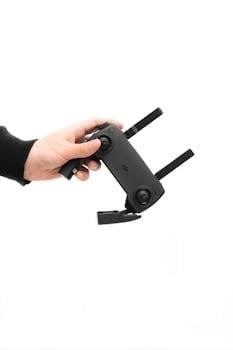Baofeng BF-F8HP User Manual⁚ A Comprehensive Guide

The Baofeng BF-F8HP is a popular amateur radio, known for its affordability and versatility. However, its included manual is often criticized for being complex and challenging to understand. This guide aims to provide clear and concise instructions.
The Baofeng BF-F8HP is a dual-band handheld transceiver that has gained immense popularity among amateur radio enthusiasts. Often regarded as the third generation of the UV-5R series, the BF-F8HP boasts improved power output and enhanced features, making it a compelling choice for both beginners and experienced users. This radio operates on VHF and UHF frequencies, providing versatile communication capabilities for various applications.
Despite its impressive capabilities, the BF-F8HP can be initially daunting for newcomers due to its complex menu system and limited documentation; The included user manual is often criticized for its lack of clarity and comprehensiveness. This introductory guide aims to bridge this gap by providing a user-friendly overview of the BF-F8HP’s features, functions, and operation. Whether you’re a seasoned ham radio operator or just starting your journey in the world of amateur radio, this resource will help you unlock the full potential of your Baofeng BF-F8HP. We’ll delve into its capabilities, including its selectable power outputs and frequency ranges.
Key Features and Functions
The Baofeng BF-F8HP is packed with features that make it a versatile tool for communication. One of its key attributes is its dual-band operation, allowing it to transmit and receive on both VHF (136-174 MHz) and UHF (400-520 MHz) frequencies. It offers selectable power levels, typically ranging from low (1W) to medium (4W) to high (8W), enabling users to adjust the transmission range and conserve battery life. The BF-F8HP also incorporates a built-in FM radio receiver, allowing users to listen to commercial FM broadcasts.
Furthermore, the radio supports both narrow and wide bandwidth modes, providing flexibility in different communication environments. It features 128 memory channels, allowing users to store frequently used frequencies and settings for quick access. The BF-F8HP includes CTCSS/DCS tone codes for selective calling and interference reduction, ensuring clear and private communication. Additional functions include a DTMF encoder for sending DTMF tones, VOX (voice-activated transmit) for hands-free operation, and an alarm function for emergency situations. The radio also has a built-in flashlight for added convenience in low-light conditions.
Initial Setup and Basic Operations

Before using the Baofeng BF-F8HP, some initial setup is required. First, attach the antenna by screwing it onto the radio’s antenna connector. Next, install the battery by sliding it onto the back of the radio until it clicks into place. Once the battery is installed, charge it fully using the provided charging cradle. Place the radio into the cradle, ensuring the charging contacts align. The LED indicator on the cradle will typically turn red while charging and green when fully charged.
To power on the radio, rotate the volume knob clockwise until you hear a click. The display will light up, indicating the radio is on. Adjust the volume to a comfortable level. To select a frequency or channel, you can use the up and down arrow keys to scroll through the available options. To transmit, press and hold the “PTT” (Push-To-Talk) button on the side of the radio while speaking into the microphone. Release the PTT button to listen. Ensure you have the appropriate license and are transmitting on authorized frequencies.
Programming Channels Manually
Programming channels manually on the Baofeng BF-F8HP involves entering frequency and other settings directly through the radio’s keypad. First, ensure the radio is in Frequency (VFO) mode by pressing the “VFO/MR” button. Next, enter the desired receive frequency using the keypad. For example, to enter 146.520 MHz, type “146520”.
To set the transmit frequency (if different for repeater operation), press the “MENU” button, scroll to option 26 (OFFSET), and enter the offset frequency. To set the CTCSS/DCS tone, press the “MENU” button, scroll to options 10 (R-CTCS) for receive tone and 11 (T-CTCS) for transmit tone, and select the appropriate tone code. Once all settings are configured, press the “MENU” button, scroll to option 28 (MEM-CH), and select the desired channel number to store the settings. Confirm the selection by pressing “MENU” again. Repeat these steps for each channel you want to program. Remember to consult local frequency coordination guidelines for appropriate settings.
Programming with CHIRP Software
CHIRP is a free, cross-platform, open-source programming tool that greatly simplifies the process of programming channels on the Baofeng BF-F8HP. To begin, download and install CHIRP from its official website. You will also need a programming cable that connects your radio to your computer’s USB port. Once CHIRP is installed and the radio is connected, turn on the BF-F8HP.
In CHIRP, select “Radio” > “Download From Radio”. Choose the correct port and radio model (Baofeng BF-F8HP) and click “OK”. This will retrieve the current radio configuration. You can then add, edit, or delete channels in the CHIRP interface. Enter the frequency, transmit power, CTCSS/DCS tones, and other settings for each channel. After making your desired changes, select “Radio” > “Upload To Radio”. Again, choose the correct port and radio model, and click “OK” to write the updated configuration to your radio.
Understanding Menu Options and Settings
The Baofeng BF-F8HP’s menu contains numerous settings that customize the radio’s operation. Access the menu by pressing the “MENU” button on the keypad. Use the up and down arrow keys to navigate through the menu items, which are numbered for easy reference. Press “MENU” again to select a menu item and modify its setting. Use the arrow keys to adjust the value and press “MENU” to save the change, or “EXIT” to cancel.

Some key menu options include⁚ “SQL” (Squelch Level), adjusting the receiver’s sensitivity to block weak signals; “TXP” (Transmit Power), selecting high, medium, or low power; “VOX” (Voice Operated Transmit), enabling hands-free transmission; “WN” (Wide/Narrow Band), selecting the bandwidth for compatibility with different systems; and “BCL” (Busy Channel Lockout), preventing transmission when the channel is in use. Understanding these settings is essential for optimizing the BF-F8HP’s performance and ensuring proper communication.
Troubleshooting Common Issues

The Baofeng BF-F8HP, while a capable radio, can sometimes present operational challenges. A common issue is the radio not transmitting. Ensure the frequency is within the allowed range and that the transmit power is set appropriately. Check the antenna connection and try a different antenna. Another frequent problem is poor audio quality. Adjust the squelch level to reduce background noise and ensure the microphone is not obstructed.
If the radio is not receiving signals, verify that the frequency and CTCSS/DCS codes are correctly programmed. Confirm that the radio is not in “busy channel lockout” mode. Battery-related problems are also common. Ensure the battery is properly charged and securely connected. If the battery drains quickly, it may be nearing the end of its lifespan and require replacement. Consult online resources for more troubleshooting tips.
Battery and Charging Information
The Baofeng BF-F8HP utilizes a lithium-ion battery pack, known for its high energy density and relatively low self-discharge rate. Proper battery care is crucial for maximizing its lifespan and performance. When charging the battery, always use the provided charging cradle and AC adapter. Ensure the battery is securely inserted into the cradle. The charger’s LED indicator will typically show a red light while charging and turn green when fully charged. Avoid overcharging the battery, as this can reduce its capacity over time.
It’s also essential to avoid completely depleting the battery before recharging. Partial charges are generally better for lithium-ion batteries than deep discharges. When storing the radio for extended periods, it’s best to store the battery at around 40-60% charge in a cool, dry place. Do not expose the battery to extreme temperatures or direct sunlight. If you notice a significant decrease in battery life or any swelling or damage to the battery pack, discontinue use and replace the battery immediately. Always dispose of used batteries responsibly according to local regulations.
Leave a Reply
You must be logged in to post a comment.